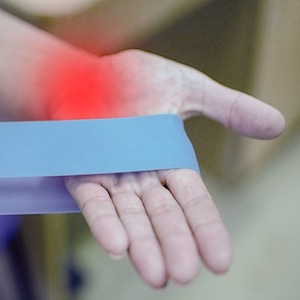The data project: a shared approach between stakeholders of the healthcare system in definition of a therapeutic algorithm for inflammatory arthritis

Accepted: 5 December 2022
All claims expressed in this article are solely those of the authors and do not necessarily represent those of their affiliated organizations, or those of the publisher, the editors and the reviewers. Any product that may be evaluated in this article or claim that may be made by its manufacturer is not guaranteed or endorsed by the publisher.
Authors
Rheumatic musculoskeletal diseases or RMD [rheumatoid arthritis (RA) and spondyloarthritis (SpA)] are systemic inflammatory diseases for which there are no biomarkers capable of predicting treatments with a higher likelihood of response in naive patients. In addition, the expiration of the anti-TNF blocking drugs’ patents has resulted in the availability of anti-TNF biosimilar drugs with the same efficacy and safety than originators but at significantly reduced prices. To guarantee a personalized therapeutic approach to RMD treatment, a board of rheumatologists and stakeholders from the Campania region, Italy, developed a clinically applicable arthritis therapeutic algorithm to guide rheumatologists (DATA project). The general methodology relied on a Delphi technique forecast to produce a set of statements that summarized the experts’ consensus. Selected clinical scenarios were discussed in light of the available evidence, and there were two rounds of voting on the therapeutic approaches. Separate discussions were held regarding rheumatoid arthritis, psoriatic arthritis, and ankylosing spondylitis. The decision-making factors for each disease were clinical presentation, demographics, and comorbidities. In this paper, we describe a virtuous process between rheumatologists and healthcare system stakeholders that resulted in the development of a shared therapeutic algorithm for RMD patients naive to bDMARDs.
How to Cite

This work is licensed under a Creative Commons Attribution-NonCommercial 4.0 International License.
Authors who publish with this journal agree to the following terms:
- Authors retain copyright and grant the journal right of first publication with the work simultaneously licensed under a Creative Commons Attribution License that allows others to share the work with an acknowledgement of the work's authorship and initial publication in this journal.
- Authors are able to enter into separate, additional contractual arrangements for the non-exclusive distribution of the journal's published version of the work (e.g., post it to an institutional repository or publish it in a book), with an acknowledgement of its initial publication in this journal.
- Authors are permitted and encouraged to post their work online (e.g., in institutional repositories or on their website) prior to and during the submission process, as it can lead to productive exchanges, as well as earlier and greater citation of published work.
Similar Articles
- G. Fiori, L. Amanzi, A. Moggi Pignone, F. Braschi, M. Matucci- Cerinic, The treatment of skin ulcers in patients with systemic sclerosis , Reumatismo: Vol. 56 No. 4 (2004)
- I. Acosta-Colman, Z. Morel, A. Ayala Lugo, V. Jolly, I. de Guillén, P. Langjahr, M. Vazquez, M.T Martínez de Filártiga, M.E. Acosta, Clinical features and genetic biomarkers associated with different phenotypes of systemic lupus erythematosus in Paraguayan patients , Reumatismo: Vol. 75 No. 2 (2023)
- E. Damiani, Arthur Conan Doyle, Sherlock Holmes, and gout , Reumatismo: Vol. 75 No. 2 (2023)
- AA. VV., Reumatismo on Index Medicus/Med-Line and Online , Reumatismo: Vol. 54 No. 3 (2002)
- S. Zeni, F. Ingegnoli, Raynaud’s phenomenon , Reumatismo: Vol. 56 No. 2 (2004)
You may also start an advanced similarity search for this article.

 https://doi.org/10.4081/reumatismo.2022.1528
https://doi.org/10.4081/reumatismo.2022.1528




